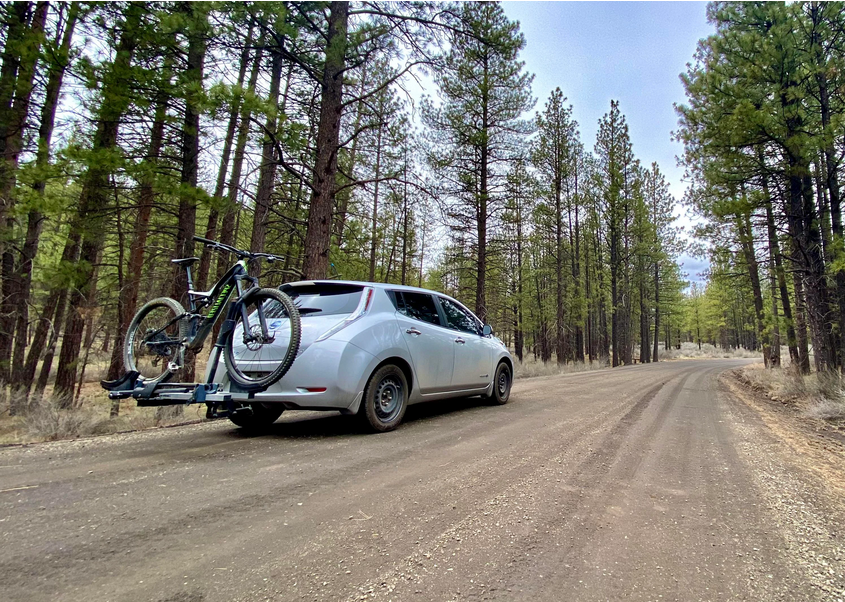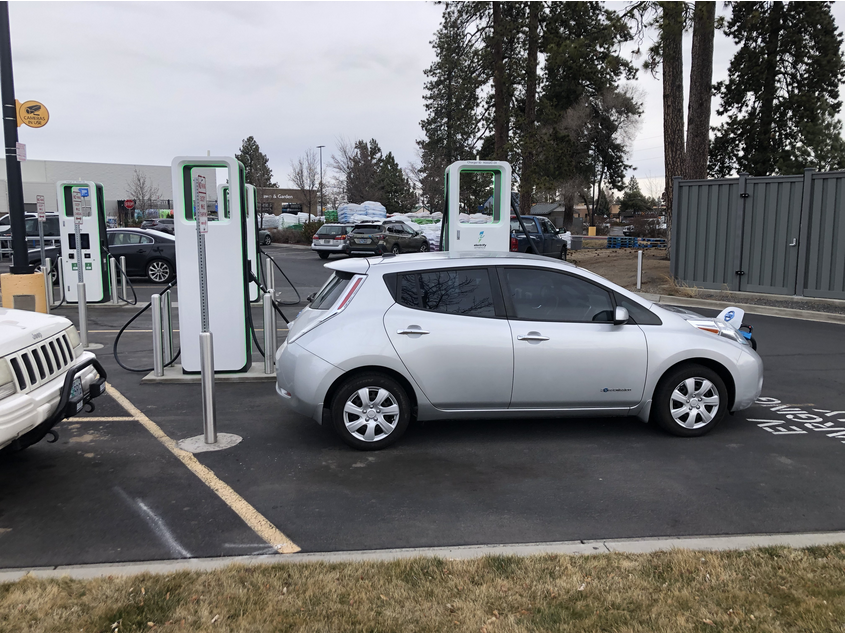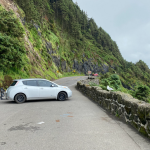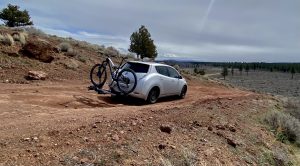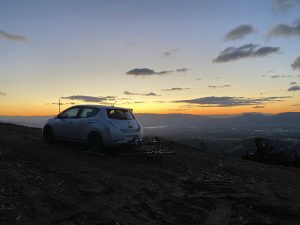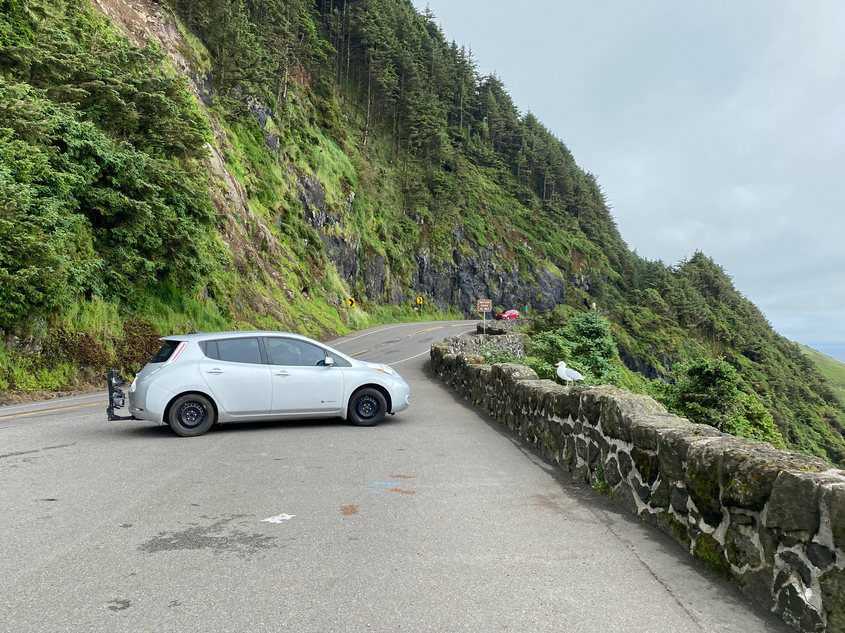
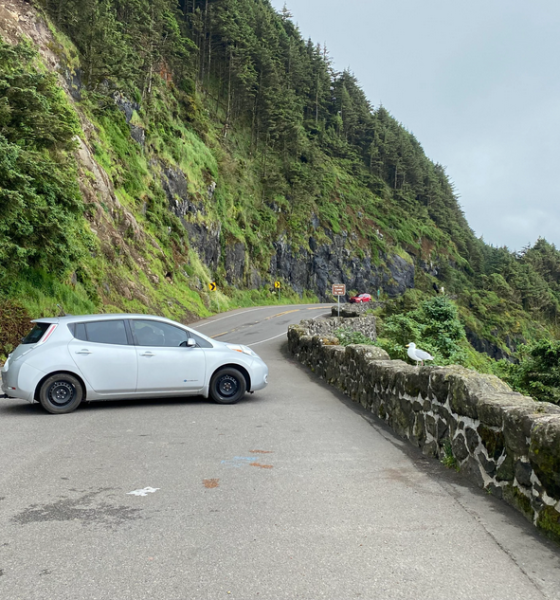
Lifestyle
Old Nissan Leaf becomes affordable road trip machine after 160-mile battery upgrade
With demand for electric vehicles surging and used prices getting pushed sky high, some may think that the idea of a sub-20,000 dollar EV with more than 70 miles of range is just a fever dream. However, one Reddit user posted their experience buying and using a first-gen Nissan Leaf that gets more than double the vehicle’s original 70 miles of claimed range.
The silver 2013 Nissan Leaf posted by user sctbke is a sleeper for sure, but an affordable one. The Reddit user writes in their post that, when faced with buying a new vehicle, they came across a shop in Portland Oregon called EV Rides that would take older Nissan Leafs and retrofit them with batteries from newer models.
- Modified Nissan Leaf with 160 miles of range, mounted with Mountian Bike, via Reddit post
- Modified Nissan Leaf with 160 miles of Range, new to user, via Reddit Post
The company offers an assortment of battery options: the original 24 kWh battery, a 30 kWh/40 kWh/ pack, or even a 62 kWh battery. This, claims the site, allows the first-gen Leaf to achieve a range of up to 230 miles per charge. Yet even the more modest upgrades allow the Leaf to either get 90-100 miles of range from the 30 kWh battery pack, or 150-160 miles with the 40 kWh battery. The Redditor opted for the 40 kWh upgrade.
In the post, sctbke says that they get roughly 110 miles of range on the highway or 160 miles of range in town. Further, they love that they can use 50 kW fast charging systems. And because their workplace has solar charging available, the vehicle essentially charges for free. From their four months of ownership, they claim that they have already saved over $1000 in gas, and the vehicle is set to pay for itself in saved gas costs in roughly 2 years.
The saved gas money was only one of the many reasons they went for the vehicle. They cited a couple of other main motivators that led them to their decision. First off, unlike many other states, Oregon offers a $5000 rebate on electric vehicles (new, used, or converted) for lower-income individuals.
- Modified Nissan Leaf with 160 miles of range with camping setup, via Reddit Post
- sckbke Juiced 2013 Nissan Leaf via Reddit post
On top of that, the Oregon and the Portland areas already have great access to charging infrastructure; including CHADEMO, which the Leaf still uses. They were also relieved to find out that the newer Leaf’s battery doesn’t deteriorate at the same rate as the older first-generation batteries, allowing for longer terms of ownership. The environmental benefits were the cherry on top.
In a comment to Teslarati, the EV owner said “I’m a big advocate for trying to get lower-income people into EVs because they can save so much money, and that’s what worked for me with this car. It took some creativity, but it became a very affordable option.” Specifically, EV drivers can benefit from less maintenance, reduced or (in this case) eliminated fuel costs, while participating in maintaining the environment.
Ever since buying it, they cited multiple quality of life benefits over their gas-powered SUV. Not only were they saving gas, but despite not having at-home charging, they only need to charge roughly 2 times a week. The vehicle has also served as a worthy companion on 3 road trips that were over 300 miles each.
While they acknowledge that the 30-45 minutes of charging required almost every 100 miles on the highway isn’t great, they plan their trip around stops in the different areas where they will charge; getting around either on foot or by bike while the Leaf replenishes its batteries. They note only one other detriment; after 300 miles, the battery often gets too hot, requiring them to stop to let it cool.
The user even notes that they were able to drive the vehicle on a 615-mile road trip down the Pacific coast without issue! The charging time and periodic ~110-mile stops simply added character to the adventure. The pictures in the post show that the Leaf has even made its way into the mountains. The small, affordable, second-hand battery-electric car has been taken everywhere from mountain biking trails to hiking and camping (yes, inside the car!) areas.
Overall, EV Rides is offering a great service by making useable electric vehicles available to a wider audience than traditional manufacturers are willing or are able to. This can be a signal that the demand for lower-cost options is there, and many would benefit from their implementation.
What do you think of the article? Do you have any comments, questions, or concerns? Shoot me an email at william@teslarati.com. You can also reach me on Twitter @WilliamWritin. If you have news tips, email us at tips@teslarati.com!

Lifestyle
Tesla Model S Plaid battles China’s 1500 hp monster Nurburgring monster, with surprising results
There is just something about Tesla’s tuning and refinement that makes raw specs seem not as game-changing.

The Tesla Model S Plaid has been around for some time. Today, it is no longer the world’s quickest four-door electric sedan, nor is it the most powerful. As per a recent video from motoring YouTube channel Carwow, however, it seems like the Model S Plaid is still more than a match for some of its newer and more powerful rivals.
The monster from China
The Xiaomi SU7 Ultra is nothing short of a monster. Just like the Model S Plaid, it features three motors. It also has 1,548 hp and 1,770 Nm of torque. It’s All Wheel Drive and weighs a hefty 2,360 kg. The vehicle, which costs just about the equivalent of £55,000, has been recorded setting an insane 7:04.957 at the Nurburgring, surpassing the previous record held by the Porsche Taycan Turbo GT.
For all intents and purposes, the Model S Plaid looked outgunned in Carwow’s test. The Model S Plaid is no slouch with its three motors that produce 1,020 hp and 1,420 Nm of torque. It’s also a bit lighter at 2,190 kg despite its larger size. However, as the Carwow host pointed out, the Model S Plaid holds a 7:25.231 record in the Nurburgring. Compared to the Xiaomi SU7 Ultra’s record, the Model S Plaid’s lap time is notably slower.
Real-world tests
As could be seen in Carwow’s drag races, however, Tesla’s tech wizardry with the Model S Plaid is still hard to beat. The two vehicles competed in nine races, and the older Model S Plaid actually beat its newer, more powerful counterpart from China several times. At one point in the race, the Xiaomi SU7 Ultra hit its power limit due to its battery’s temperature, but the Model S Plaid was still going strong.
The Model S Plaid was first teased five years ago, in September 2020 during Tesla’s Battery Day. Since then, cars like the Lucid Air Sapphire and the Xiaomi SU7 Ultra have been released, surpassing its specs. But just like the Model Y ended up being the better all-rounder compared to the BYD Sealion 7 and the MG IM6, there is just something about Tesla’s tuning and refinement that makes raw specs seem not as game-changing.
Check out Carwow’s Model S Plaid vs Xiaomi SU7 drag race video below.
Lifestyle
500-mile test proves why Tesla Model Y still humiliates rivals in Europe
On paper, the BYD Sealion 7 and MG IM6 promised standout capabilities against the Model Y.

BYD is seeing a lot of momentum in Europe, so much so that mainstream media has taken every opportunity to argue that the Chinese automaker has beaten Tesla in the region. But while BYD sales this year in Europe are rising and Tesla’s registrations remain challenged, the raw capabilities of vehicles like the Model Y are difficult to deny.
This was highlighted in a 500-mile challenge by What Car? magazine, which showed that the new Tesla Model Y is more efficient, cheaper to run, and more reliable than rivals like the BYD Sealion 7, and even the nearly 400 KW-charging MG IM6.
Range and charging promises
On paper, the BYD Sealion 7 and MG IM6 promised standout capabilities against the Model Y. The Sealion 7 had more estimated range and the IM6 promised significantly faster charging. When faced with real-world conditions, however, it was still the Model Y that proved superior.
During the 500-mile test, the BYD nearly failed to reach a charging stop, arriving with less range than its display projected, as noted in a CarUp report. MG fared better, but its charging speeds never reached its promised nearly-400 kW charging speed. Tesla’s Model Y, by comparison, managed energy calculations precisely and arrived at each stop without issue.
Tesla leads in areas that matter
Charging times from 25% to 80% showed that the MG was the fastest at 17 minutes, while Tesla and BYD were close at 28 and 29 minutes, respectively. Overall efficiency and cost told a different story, however. The Model Y consumed 19.4 kWh per 100 km, compared to 22.2 for MG and 23.9 for BYD. Over the full trip, Tesla’s charging costs totaled just £82 thanks to its supercharger network, far below BYD’s £130 and MG’s £119.
What Car? Magazine’s testers concluded that despite BYD’s rapid sales growth and the MG IM6’s seriously impressive charging speeds, Tesla remains the more compelling real-world choice. The Model Y just offers stability, efficiency, and a proven charging infrastructure through its Supercharging network. And as per the magazine’s hosts, the Model Y is even the cheapest car to own among the three that were tested.
Watch What Car? Magazine’s 500-mile test in the video below.
Lifestyle
Tesla Cybertruck slapped with world’s least intimidating ticket, and it’s pure cringe
One cannot help but cringe and feel second-hand embarrassment at the idea of a person just driving around with a stack of these babies.

A Cybertruck parked at Stanford Shopping Center in California was recently hit with what might be the most try-hard piece of paper ever slipped under a wiper blade: a “fake citation” accusing the driver of supporting a “fascist car.”
The note, shared on X by Tesla staff program manager Ryan Torres, quickly made the rounds on X, where it quickly gained attention as an example of how not to protest.
The world’s least intimidating ticket
According to the citation, the supposed “violation” was “driving a fascist car.” The remedial action? Take the bus, call an Uber, or ride a bike. The note also dubbed Elon Musk a “chainsaw-wielding Nazi billionaire.” Now, protests against Tesla and Elon Musk have become commonplace this year, but one cannot help but cringe and feel second-hand embarrassment at the idea of a person just driving around with a stack of fake anti-Tesla/Musk citations.
Torres pointed out the irony himself in his post on X. Tesla currently employs over 140,000 Americans, and SpaceX has put the U.S. firmly back at the top of space technology. As Torres put it, maybe the person behind the world’s least intimidating ticket should “read a book on innovation before vandalizing” other people’s property.
Peak performative clownery
Not to mention that the fake ticket’s logic collapses under its own weight. EVs like the Cybertruck are literally designed to reduce emissions, not “destroy the economy.” If anything, Tesla has bolstered the United States’ economy by fueling jobs in engineering, manufacturing, and clean energy. It’s not the first time a Tesla has been the target of vandalism or politically charged notes, but this one stands out for sheer cringe value.
Torres summed it up neatly: “Peak clownery.” On that point, at least, the citation earns full marks. In a way, though, perhaps cringe fake tickets are not as bad as the literal firebombs that were being thrown at Tesla stores and cars earlier this year because some critics were gleefully misinformed about Elon Musk.
